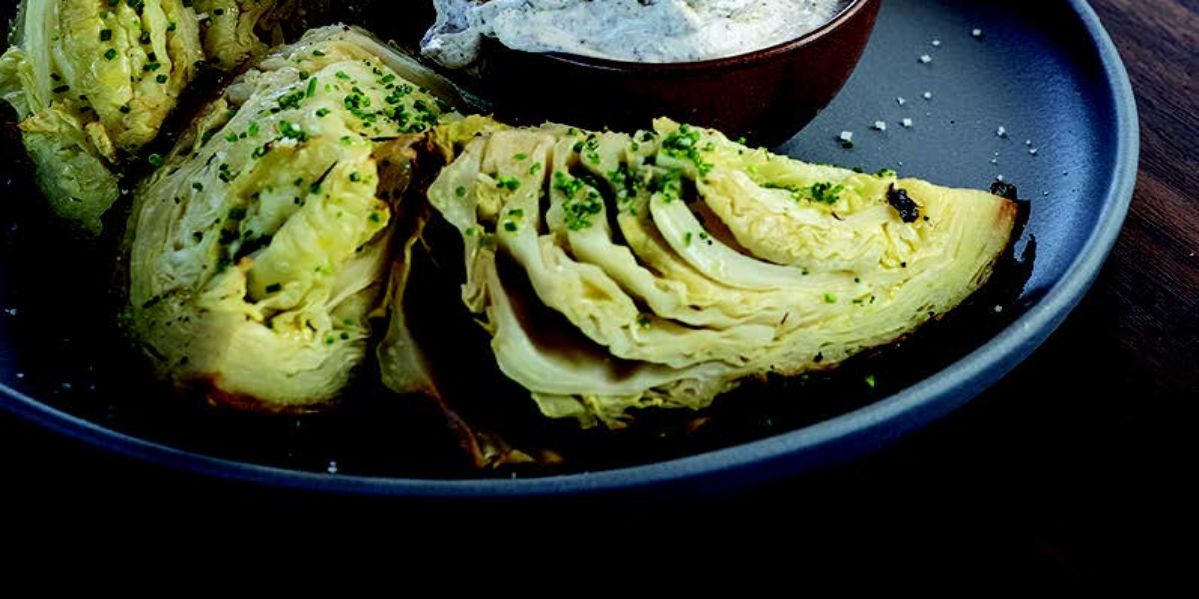
This Ember Roasted Cabbage Is the Best Reason to Burn Your Dinner on Purpose
This ingenious technique is your secret weapon to making cabbage your new favorite vegetable (trust us on this)

Stan Lee
The sun is out. The air is warm. The grill is hot! Every Friday until it gets too cold, Sunset food editor Hugh Garvey will present the recipes he’s putting on his three (!) grills in Los Angeles. Follow along, and if you make the recipes, too, we’d love to see how they come out. Put those pics on Instagram, tag @sunsetmag, and use the hashtag #GrillThisNow.
We live in the golden era of the large format vegetable: the whole roasted cauliflowers at Israeli chain Miznon and New York’s ABC Kitchen, the celebrated salt-baked Japanese turnips at dearly departed PYT, and the ember-roasted cabbage at Charcoal in Venice. Ember-roasting is a technique by which preposterously cheap vegetables become transcendently smokey, unctuous, and sweet after a hellacious hour or so buried in red hot embers. When veteran L.A. chef Josiah Citrin opened the pioneering wood-fire-focused steakhouse Charcoal in Venice, the cabbage quickly became a best seller, despite the fact it was competing with salty, juicy, fatty, meaty foodstuffs genetically predisposed to trigger dopamine reactions in diners.
Citrin’s cookbook Charcoal: New Ways to Cook With Fire contains a recipe for the cabbage, so I gave it a whirl twice this week. Each time it took varying degrees of effort depending on the nature of the fire and the size of the cabbage, and each time it yielded a different result that was always tender, consistently smoky, and extremely satisfying—sort of like cooking a steak! In fact, the parallels are uncanny should you find yourself repeatedly ember roasting cabbage.
Ember roasting is not an exact science. You get some coals super hot. You bury your food. You wait.

At least, in theory. The first time, I foolishly ignored the recipe’s recommendation for a 2-pound cabbage and couldn’t fully bury my 5-pounder. I was left rotating my proportionally meager pile of coals every 15 minutes or so. The second time, I sparked up two chimneys, covered a 2.5-pounder in white, hot coals, and waited too long. This turned the outer leaves to ash. It was ruined…or so I thought. Once I scraped off the excess ash, the inside of the cabbage was custardy, smoke-tinged, and almost caramel-sweet. The triple-threat combo of the sumac, lemon zest, and lemon juice-spiked yogurt dip formed a perfect tangy foil to all that depth of flavor.
